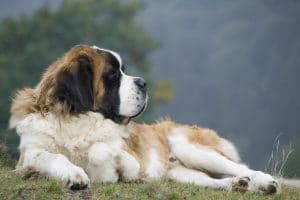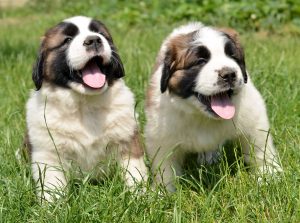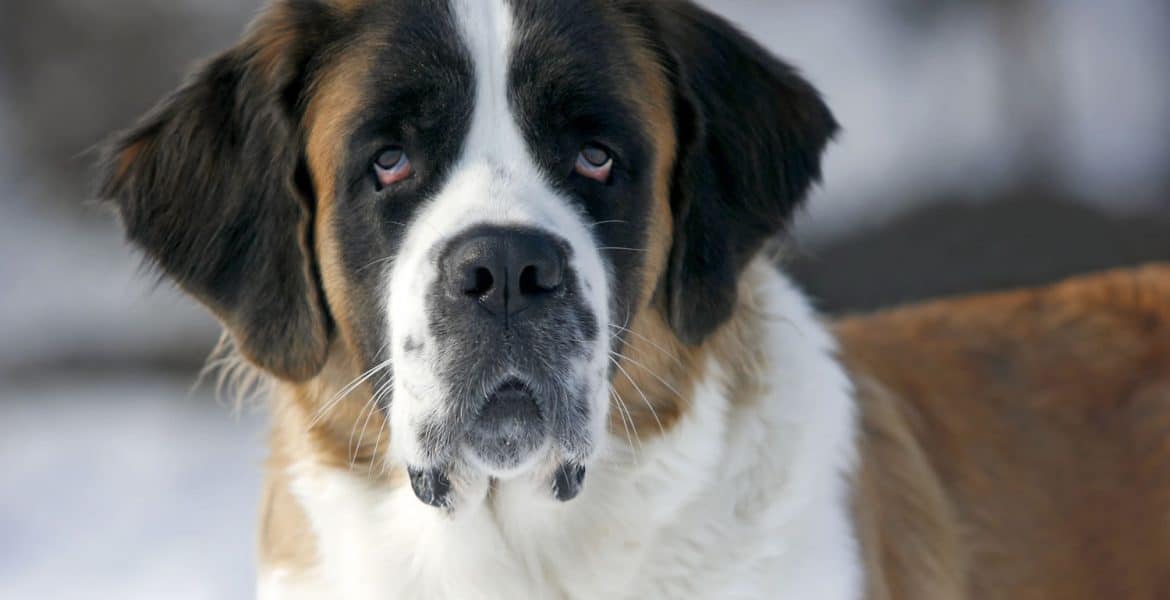 The St. Bernard breed has a long history. They are believed to be descendants of the molosser type dogs that were brought to Switzerland by the Romans. The earliest record of the breed is from 1707. Commonly used as farm dogs, St. Bernards earned their keep by herding and guarding livestock as well as hunting.
The St. Bernard breed has a long history. They are believed to be descendants of the molosser type dogs that were brought to Switzerland by the Romans. The earliest record of the breed is from 1707. Commonly used as farm dogs, St. Bernards earned their keep by herding and guarding livestock as well as hunting.
However, guarding and hunting is not what this breed is famous for. Instead, most people know them as the brave rescue dogs of the Swiss Alps. In fact, the breed was named after the Great St. Bernard Pass, an area between Switzerland and Italy where thousands of people were lost and rescued. The breed’s sharp noses enabled them to find lost travellers under the snow. St. Bernards would go out in groups of two when searching for a lost hiker. Once their target was found, one dog would lay down next to him to keep him warm while the other would go for help.
From 1816 through 1818, a series of huge avalanches on the Alps wiped out many St. Bernards. In order to keep the breed alive, Newfoundland dogs were bred with the remaining St. Bernards. Because of the long, icicle creating hair these offspring had, they were no longer suitable for rescue missions. Even so, the Swiss continued to hold them in high regard, even going so far as to name them their national dog.
There is no other way to put it, St. Bernards are massive. They average from 64 to 120 kilograms in weight and stand 70 to 90 centimetres at the withers. Usually the height and weight of the breed is proportional: the taller the dog, the heavier it will be. Historically their size was quite useful when going about rescue missions, but today it does make them unsuitable for apartment living.
 The coat of a St. Bernard will either be rough or smooth. Both types of coat are very dense. The coats are mainly white and there are various combinations of markings with this breed, with colours that range from red and mahogany to black. The hair found on their legs is usually longer and a little feathered. This breed sheds twice a year and requires very little grooming.
The coat of a St. Bernard will either be rough or smooth. Both types of coat are very dense. The coats are mainly white and there are various combinations of markings with this breed, with colours that range from red and mahogany to black. The hair found on their legs is usually longer and a little feathered. This breed sheds twice a year and requires very little grooming.
As a whole, St. Bernards are very sweet and friendly dogs. They’re slow moving but eager to please. They are extremely loyal and gentle with children, making them a wonderful family pet. These dogs are “people dogs” and are much happier when they’re allowed to spend time with their family instead of alone in a back yard.
Although they have a pleasant disposition, the breed’s size can be a problem for some owners. It is very important to start training a St. Bernard early, while they’re still small enough to control. These dogs have a rapid rate of growth during their first years and if they grow larger without proper training, they can have no problem knocking over children with an enthusiastic greeting or dragging their owner down the street by their leash. Proper socialization at a young age is also crucial to reduce the risk of aggressive behaviours later on in life.
 Because they grow heavy so quickly, St. Bernards can experience bone problems if they don’t get the right nutrients. Hip dysplasia is a common problem among this breed, as is epilepsy and seizures. Bone cancer has also been found to be hereditary within the breed. They have a low tolerance for hot weather and should be kept inside on hot, humid summer days.
Because they grow heavy so quickly, St. Bernards can experience bone problems if they don’t get the right nutrients. Hip dysplasia is a common problem among this breed, as is epilepsy and seizures. Bone cancer has also been found to be hereditary within the breed. They have a low tolerance for hot weather and should be kept inside on hot, humid summer days.
Although they are no longer used for search and rescue, St Bernards do have a chance to show off their strength and size in competition. Carting and weight pulling are popular sports for this breed.


